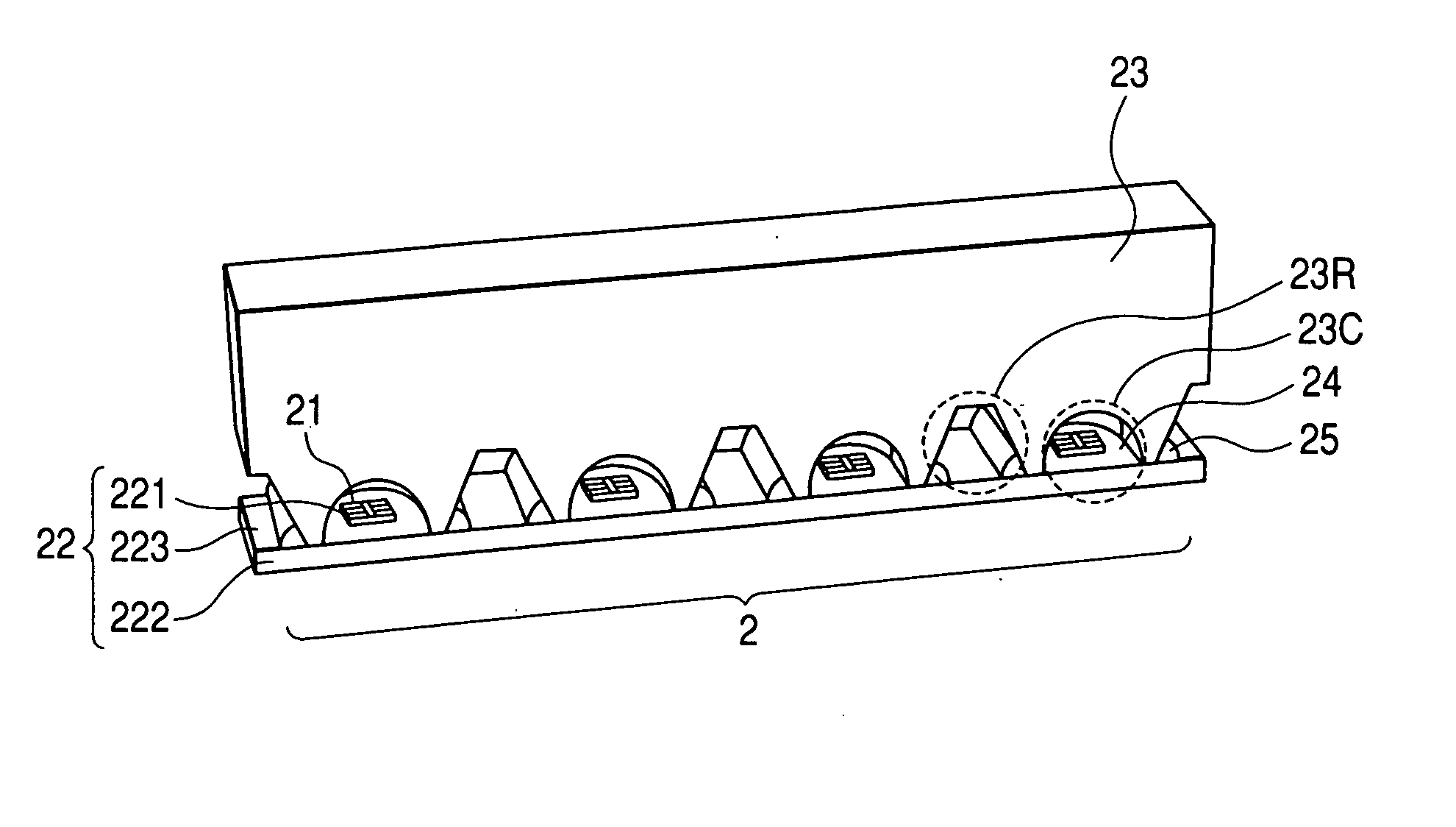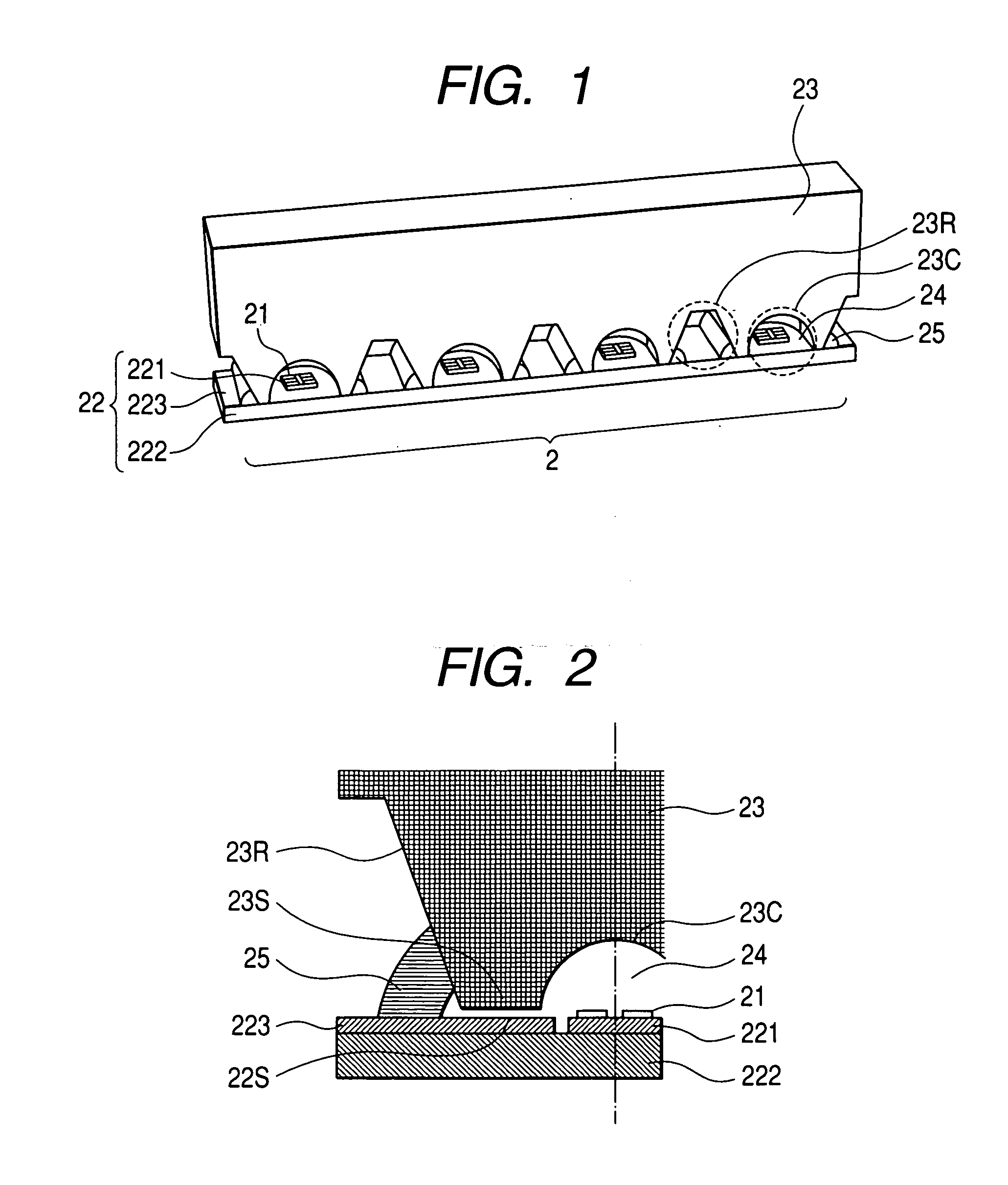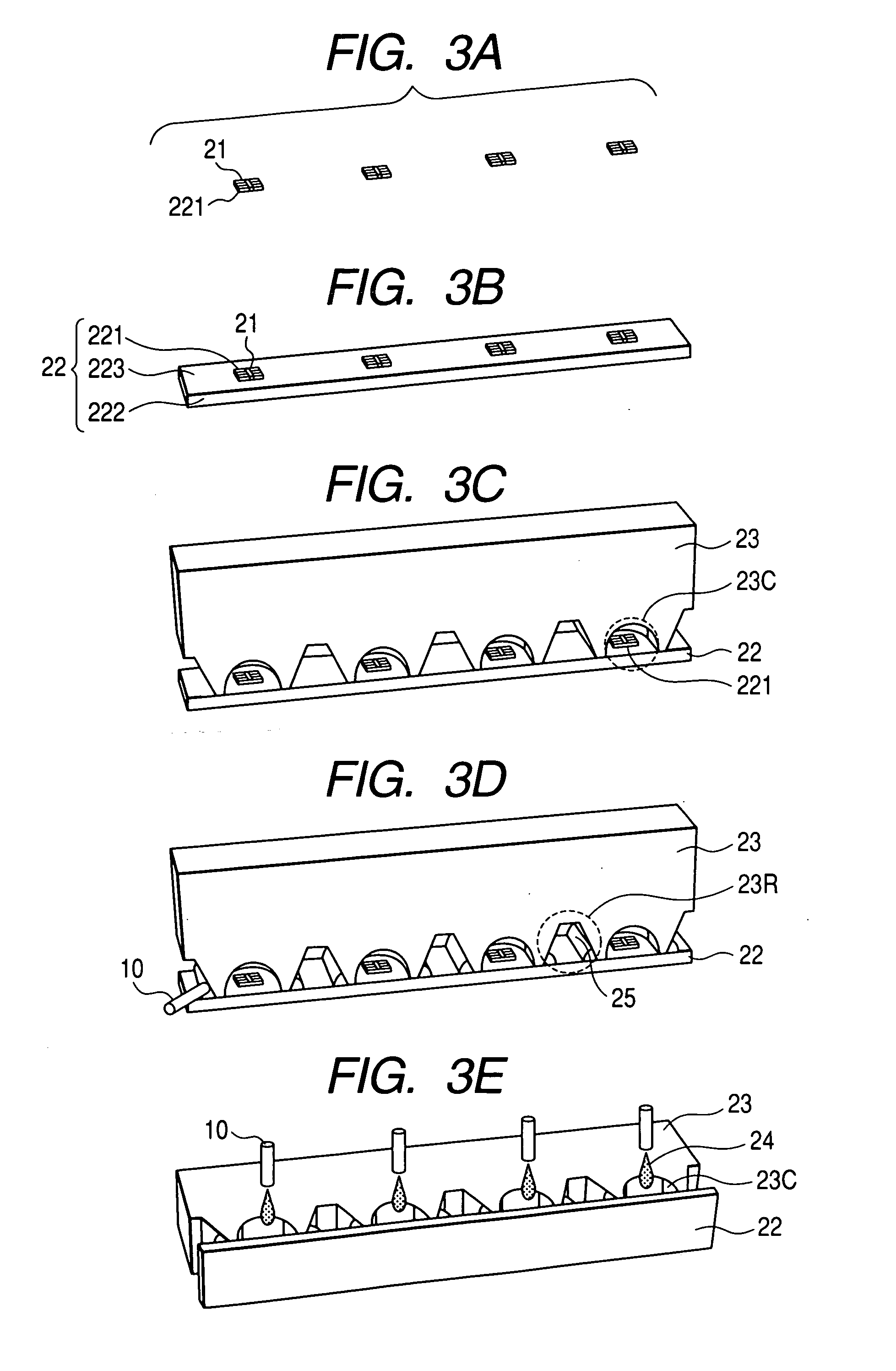Liquid crystal display, illuminant module and its manufacturing method
a technology of illuminant modules and liquid crystal displays, which is applied in the field of illuminant modules, can solve the problems of deteriorating the performance of leds themselves and peripheral devices, adversely affecting the long-term reliability of illuminant modules, and different magnitudes of thermal expansion, so as to achieve high optical extraction efficiency, high image quality, and high cooling efficiency
- Summary
- Abstract
- Description
- Claims
- Application Information
AI Technical Summary
Benefits of technology
Problems solved by technology
Method used
Image
Examples
first embodiment
[0017]FIG. 1 is a perspective view showing the structure of the first embodiment of an illuminant module in accordance with the present invention. FIG. 2 is a longitudinal cross-sectional view of a bonding material included in the illuminant module and its surroundings. In the drawings, there are shown an illuminant module 2, light emitting elements 21, a substrate 22 (sub-mounts 221, a metal substrate 222, a printed-circuit board 223), a lens material 23 (cavities 23C and notches 23R), a transparent encapsulating resin 24, and a coupling member 25.
[0018] The illuminant module 2 includes the light emitting elements 21, the sub-mounts 221 on which the light emitting elements are mounted, the metal substrate 222 on which the plurality of sub-mounts 221 is mounted, the transparent encapsulating resin 24 which encapsulates the sub-mounts 221 and light emitting elements 21 on the metal substrate 222, the lens material 23 that covers the metal substrate 222 and transparent encapsulating ...
second embodiment
[0023] The second embodiment has the same constituent features as the first embodiment. In addition, the Young's modulus of the transparent encapsulating resin 24 and bonding material 25 respectively are lower than the Young's modulus of the lens material 23. Owing to this constituent feature, the bonding material 25 can more greatly deform than it does in the first embodiment. Moreover, when the Young's modulus of the transparent encapsulating resin 24 is lower than that of the lens material 23, the entire interface between the lens material 23 and substrate 22 can deform greatly. Consequently, even if relative positioning errors derived from a difference in a magnitude of thermal deformation between the lens material 23 and substrate 22 get large, the relative positioning errors can be absorbed. A thermal stress working on the interface between the lens material 23 and substrate 22 can be alleviated. Therefore, interfacial debonding of the bonded part between the lens material 23 ...
third embodiment
[0024] As the third embodiment, an embodiment of a liquid crystal display device including the illuminant module in accordance with the first or second embodiment of the present invention will be described in conjunction with drawings.
[0025]FIG. 4 is a perspective view showing the structure of an embodiment of a liquid crystal display device in accordance with the present invention. In the drawing, there are shown a liquid crystal display device 1, an illuminant module 2, a light guide plate 3, a reflection sheet 4, an optical sheet 5, a liquid crystal panel 6, and a heat sink 7. The reflection sheet 4 includes a back reflection sheet 41 that covers the entire back of the light guide plate 3, and a lateral reflection sheet 42 that reflects light leaking out of the illuminant module 2. The optical sheet 5 includes lengthwise and sideways prism sheets 51 and 52, and a diffusion sheet 53.
[0026] The light emitting elements 21 emit light through the light emitting surface of the lens m...
PUM
| Property | Measurement | Unit |
|---|---|---|
| transparent | aaaaa | aaaaa |
| Young's modulus | aaaaa | aaaaa |
| adhesion | aaaaa | aaaaa |
Abstract
Description
Claims
Application Information
 Login to View More
Login to View More - R&D
- Intellectual Property
- Life Sciences
- Materials
- Tech Scout
- Unparalleled Data Quality
- Higher Quality Content
- 60% Fewer Hallucinations
Browse by: Latest US Patents, China's latest patents, Technical Efficacy Thesaurus, Application Domain, Technology Topic, Popular Technical Reports.
© 2025 PatSnap. All rights reserved.Legal|Privacy policy|Modern Slavery Act Transparency Statement|Sitemap|About US| Contact US: help@patsnap.com



